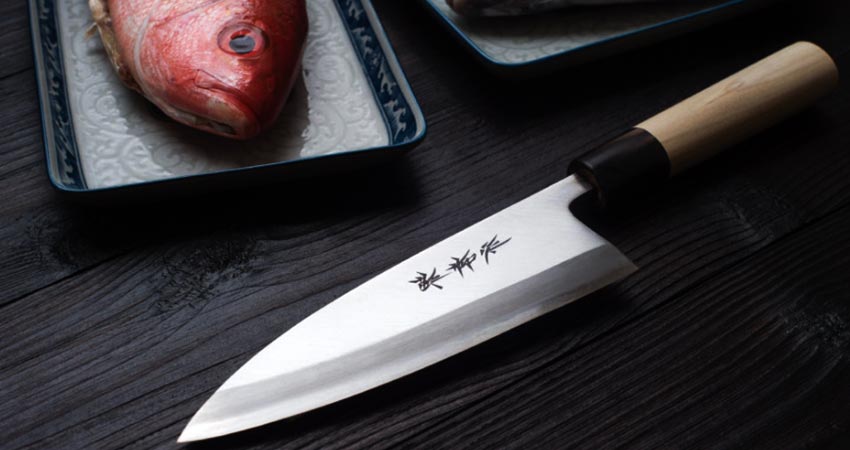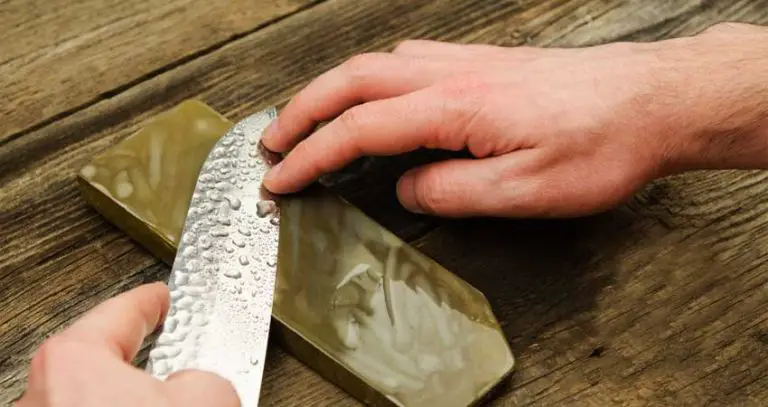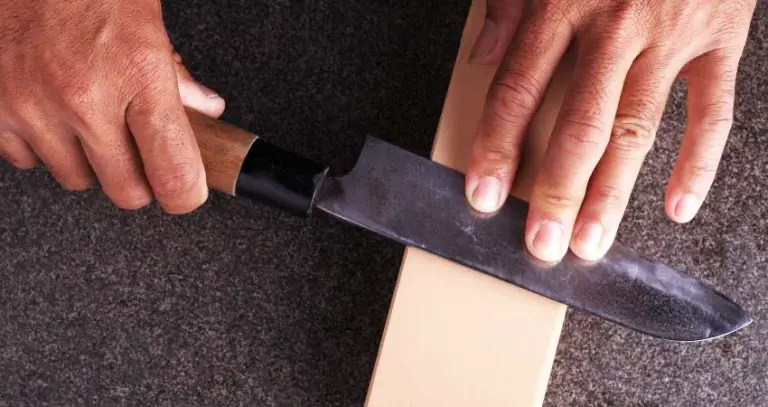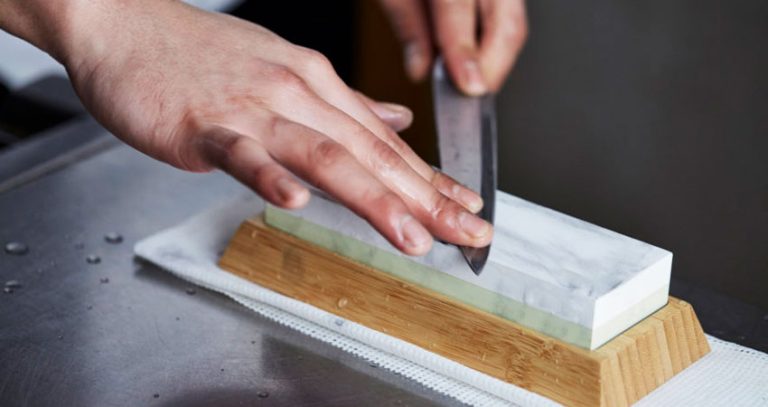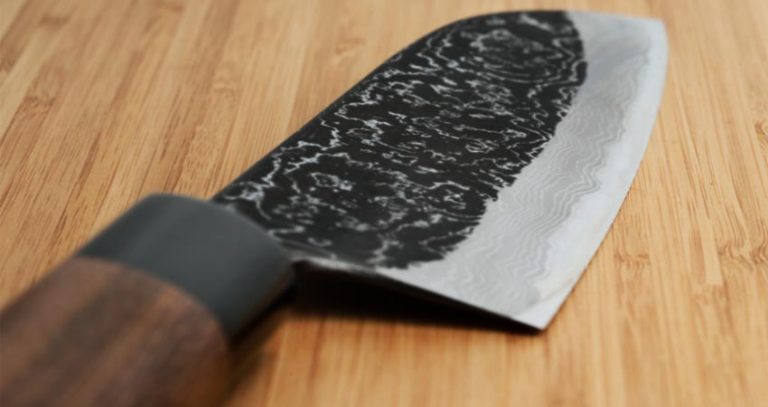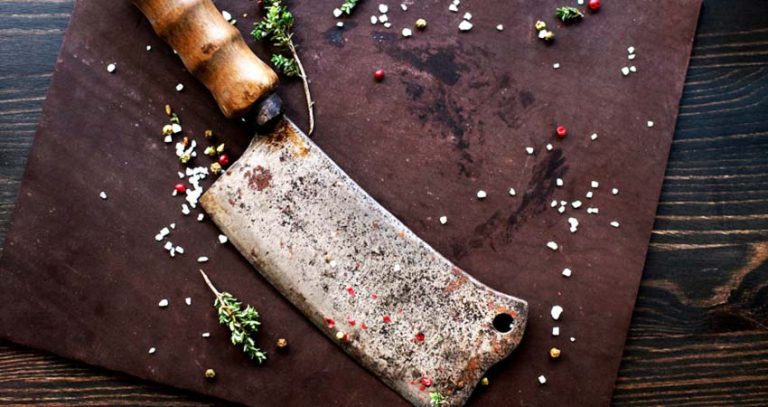How to Maintain a Japanese Knife? A Full Overview
Japanese knives have become a cult in the culinary industry worldwide. With the craftsmanship of sword making, Japanese forgers are known for making some of the finest knives on this planet.
A unique characteristic of Japanese knives is the ultimate hardness and sharpness of the blades.
And when you own such a knife, you should maintain it properly to keep it in primo condition for a long time.
If you don’t know how to maintain a Japanese knife yet, this guide will help you master the techniques of using and maintaining a Japanese knife.
Let’s get started!
Characteristics Of Japanese Knives
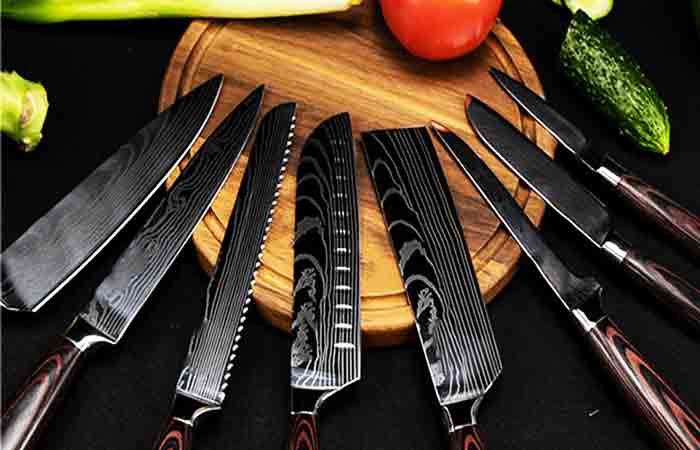
Japanese knives have distinctive characteristics that make them stand out.
- They are usually made of stainless steel or high carbon steel.
- Stainless steel knives are more suitable for everyday use.
- Carbon steel knives are very delicate. Due to the high hardness of these blades, carbon steel knives are prone to chipping or breaking.
- Though stainless steel knives are resistant to rust and corrosion, their service life may get shortened if you don’t maintain them properly.
- And most importantly, Japanese kitchen knives are great for use in rocking motion. Lateral movements can damage the blade of these knives.
How To Maintain A Japanese Knife?
The maintenance of Japanese knives includes the correct use, regular washing, proper storage, honing, etc. We will go over everything in detail, so let’s divide the maintenance into sections.
Correct Use
Using a Japanese knife properly can be the biggest maintenance. You must ensure the knife is used in a job that it is intended to.
Follow the tips below to use your knife correctly :
- Use the right type of knife for each job. For example, regular kitchen knives are made for chopping through soft objects like fruits and veggies.
- You shouldn’t fight a bone with these knives. If you need to debone something, take a boning knife for that.
- As we have already mentioned, Japanese kitchen knives or chef knives are made to use in a rocking motion. If you move the blade laterally, the tough and thin blade can be damaged quickly.
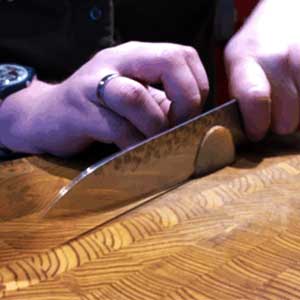
- Don’t cut something too tough with the blade. A simple rule here is to use the knife for something you can bite.
- These knives shouldn’t be used to cut bones or frozen food items. Cutting the wrong object will dull the knife blade fast, reducing the knife’s service life.
- Don’t use the knife blade without honing or sharpening if you feel the knife is dull or rusty.
- Using a dull knife can result in accidents. Sharpen the knife as soon as possible to avoid such hazards.
- Use the right cutting surface for these knives. Some people tend to use the knife on marble or granite surfaces. But it is harmful to the blade.
- If the knife can’t scratch the surface, the cutting surface will damage the knife. Use a plastic or wooden cutting board.
- Hiba or Hinoki woods are commonly used to make cutting boards for Japanese knives.
Proper Washing
It may seem an easy care, but washing your Japanese knives is really crucial.
You need to follow these steps to clean and maintain the knife properly :
- Washing the knife immediately after every use is the best practice.
- Stainless steel knives can tolerate some ignorance, but carbon steel knives can rust quite easily. So, wash it right away once you are done with the knife.
- Don’t put the knife inside a dishwasher ever. The hot water and chemicals can damage the quality of the steel. As a result, the blade might become brittle too quickly.
- To maintain the integrity of the steel blade, wash the knife with your hand. You can use mild soap to clean the knife. But the best practice is to wipe the knife with a damp cloth soaked in soapy water.
- After washing the knife, don’t let it sit to air dry.
- Take a clean, dry cloth and wipe the blade until it is completely dry. Leaving wet knives in storage can build rust easily.

- Don’t use abrasive scrubbers to rub the knife while washing. This might damage the blades.
- Use a soft sponge or damp cloth to remove any residue.
Rust Prevention
If there is any mistake in your maintenance, knife blades can build rust over time. Rust makes the blades brittle and dull.
To prevent rust, follow these steps :
- Run a visual inspection every now and then to find whether the knife blade has any sign of rust.
- Sometimes, grey or black patina can form on the edges. But there is nothing to worry about it. Carbon steel blades achieve better rust resistance with patinas.
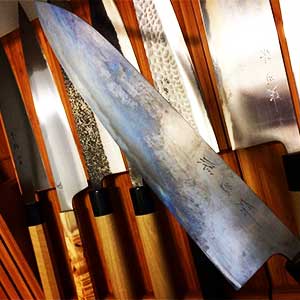
- Properly washing and drying the blade is the main technique to prevent rust on knife blades, especially on carbon steel knives.
- After drying the knife but before putting it into the storage, you can apply a bit of oil. But wipe off the excess oil with a dry cloth or paper towel after a few minutes.
- If there is any reddish-brown shade on the blade, you must take steps to remove the rust. Use steel wool to scrub the surface of the blade. You can also use special oils to soften the rust.
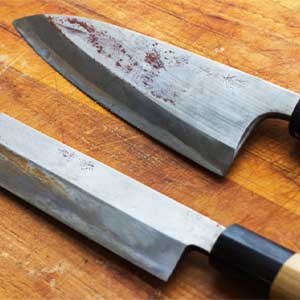
Sharpening Japanese Knives
After using a while, knife blades can become dull. You need to sharpen the blade to continue using the knife without accidents.

Follow these pro tips to sharpen your knife blade effortlessly :
You should always use a Japanese whetstone to sharpen the knife blades. Using a belt sander might damage the blade easily. Whetstones of different grits from 120 to 3000 are used to sharpen Japanese knives.
- Soak the whetstone for a few minutes but don’t overdo it.
- Hold the knife blade on the whetstone at a maximum angle of 15 degrees.
- Start sharpening the blade at the base. Work your way out to the tip of the blade.
- Don’t apply excess pressure while sharpening.
- Gently push the knife away from you while keeping contact with the sharpening stone.
- But don’t apply pressure while pulling it towards you.
- Once the sharpening is over, wash and dry the knife thoroughly.
- You can also use honing rods between sharpening.
- Honing should be done regularly to maintain the sharpness of the blade.
Conclusion
Most people are too enthusiastic about buying a Japanese knife for their kitchen, but only a few are actually aware of the maintenance related to these knives. But maintaining a Japanese knife is equally important.
The first thing you can do is not use the knife as any other tool for opening or prying something. Only use the knife for chopping soft objects in the kitchen. Wash the knife after every use and dry it before storing.
Use honing rods regularly and sharpen the blade whenever necessary. Now that you know how to maintain a Japanese knife, we expect you will take better care of your knife, and it will sustain for a lifetime.

